Recently I’ve been tardy in posting on this blog because Mia and I just recently returned from one of our favorite camping/photo destinations – four days at Red Rock Lakes National Wildlife Refuge. This trip was a memorable one (as they always are at RRL).
Canon 40D, 1/200, f/16, ISO 500 @35mm, ev 0.0
5:30 pm. We were photographing American Avocets and Wilson’s Phalaropes on one of the refuge ponds when we looked behind us to the west and saw this impressive storm heading our way. It was really dumping on the foothills surrounding the valley and we figured things might get interesting so we decided to stay at the pond and see what happened. Good thing we were shooting from my pickup or we’d have been in trouble…
Canon 40D, 1/250, f/16, ISO 500 @17mm, ev +0.33
5:52 pm. The slow-moving storm took a while to get to us but when it did it was impressive. It began to rain very hard. It was so intense that neither of us could keep water off of our lenses – in spite of the 7″ long hood on the end of my 500mm lens. I love my new Ford F-150 pickup but the engineers did a poor job on the roof rain channels and water simply poured in off the roof whenever a window was down. As you can see in my side mirror, Mia (who shoots from the back seat) has taken a temporary respite from the downpour and has her lens pulled in and her window up.
Canon 40D, 1/100, f/16, ISO 500 @56mm, ev +1.00
6:15 pm. A temporary reprieve from the rain – with rainbow and light. But it was literally the “calm before the (real) storm”.
Canon 7D, 1/320, f/5.6, ISO 800, ev +0.33, 500 f/4, 1.4 tc
6:31 pm. As the most intense part of the storm approached, the birds reacted by bunching up in flocks of their own species and flying around nervously.
Canon 7D, 1/640, f/5.6, ISO 800, ev -0.33, 500 f/4, 1.4 tc
6:32 pm. The hail begins. Here you can see it impacting the water and if you look closely you can see that it is coming in at a slant from left to right causing the impact plumes on the water surface to splash to the right. Later the direction of the hail would change.
Canon 7D, 1/500, f/5.6, ISO 800, ev -0.33, 500 f/4, 1.4 tc
6:33 pm. The behavior of the birds seemed to indicate that they didn’t know what to do to escape the hail. They flew in these tight flocks for a while but soon changed tactics.
Canon 7D, 1/640, f/5.6, ISO 800, ev -0.33, 500 f/4, 1.4 tc
6:33 pm. When the hail continued to intensify most of the avocets settled into the water while others simply raised their wings in the wind and hovered over their companions. They were really being pummelled by the hail and seemed confused and frightened.
Canon 7D, 1/640, f/6.3, ISO 800, ev -0.33, 500 f/4, 1.4 tc
6:35:02 pm. Within a couple of minutes they got out of the water and bunched up tightly against each other and against the background brush. Avocets were just too large to huddle under most of the plants along the shore but that’s exactly what many of the smaller phalaropes did. There are phalaropes crouching out of sight in the brush behind the avocets.
Canon 7D, 1/500, f/6.3, ISO 800, ev -0.33, 500 f/4, 1.4 tc
6:35:17 pm. Within seconds most of the hail abated and the intensity of the rain increased. The avocets reacted immediately by beginning to tentatively walk back toward the water.
Canon 7D, 1/640, f/6.3, ISO 800, ev -0.33, 500 f/4, 1.4 tc
6:35:24 pm. The phalaropes reacted to the hail stoppage almost as quickly as the avocets did. Here you can see three of them emerging from the background brush and hovering over the avocets.
Canon 7D, 1/800, f/13, ISO 800, ev -0.33, 500 f/4, 1.4 tc
6:37 pm. Even though it was still raining hard the avocets seemed almost jaunty in having the hail part of the storm behind them.
Canon 7D, 1/500, f/6.3, ISO 800, ev +0.00, 500 f/4, 1.4 tc
6:48 pm. At times the rain would intensify again but the birds seemed to do fine with it, flying in small groups in tight little circles and then landing again – seemingly in celebration of having survived the hail (anthropomorphic of me, I know). Notice that the direction of slant of the raindrops has now changed from some of my earlier images in this post.
Canon 7D, 1/1250, f/5.6, ISO 800, ev +0.00, 500 f/4, 1.4 tc
6:57 pm. These “celebratory” flights provided some nice opportunities for photos of the birds in flight against the threatening dark skies in the background. I liked this image of the avocets with a single phalarope amongst them in a formation that seemed almost protective of the phalarope. The background “noise” in this image is really rain.
Canon 7D, 1/600, f/5.6, ISO 800, ev +0.00, 500 f/4, 1.4 tc
7:01 pm. The phalaropes joined in these flights also. Most of these birds are Wilson’s Phalaropes but a sharp-eyed observer will notice that at least 6 of them are Red-necked Phalaropes (slightly smaller with white markings on upper wings).
Canon 7D, 1/2000, f/5.6, ISO 800, ev +0.00, 500 f/4, 1.4 tc
7:06 pm. And then to top it all off, as the storm dissipated a glorious rainbow appeared to provide background color for some more flight shots of the phalaropes. What an experience this was for Mia and I and for the birds I’m sure. It impressed on me again just how vulnerable birds are to so many different kinds of events – both natural and man-caused. If these hailstones had been much larger I’m sure that birds would have been injured or killed. Even I felt a bit intimidated by the hail and I was inside my pickup. I can only imagine how frightening it must have been for the birds.
Ron


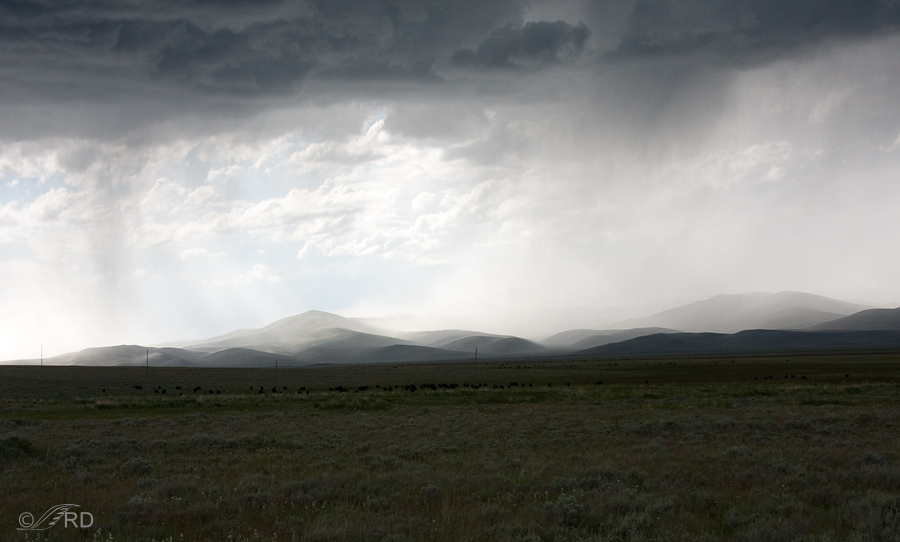
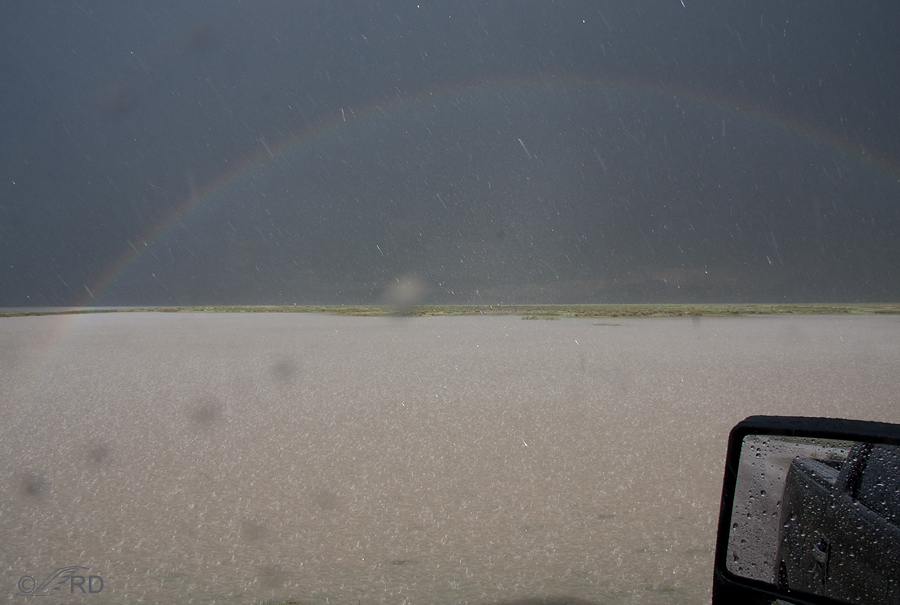
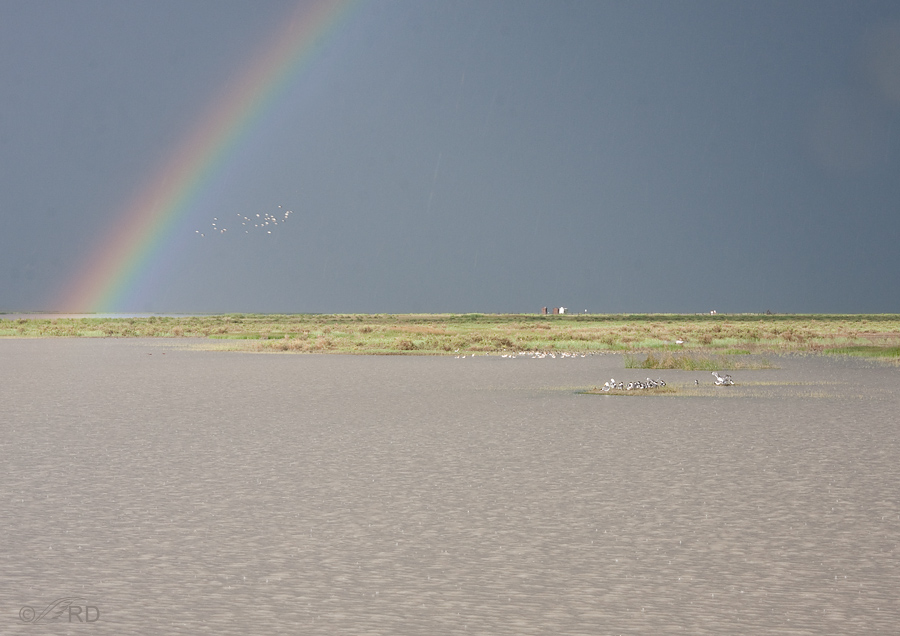
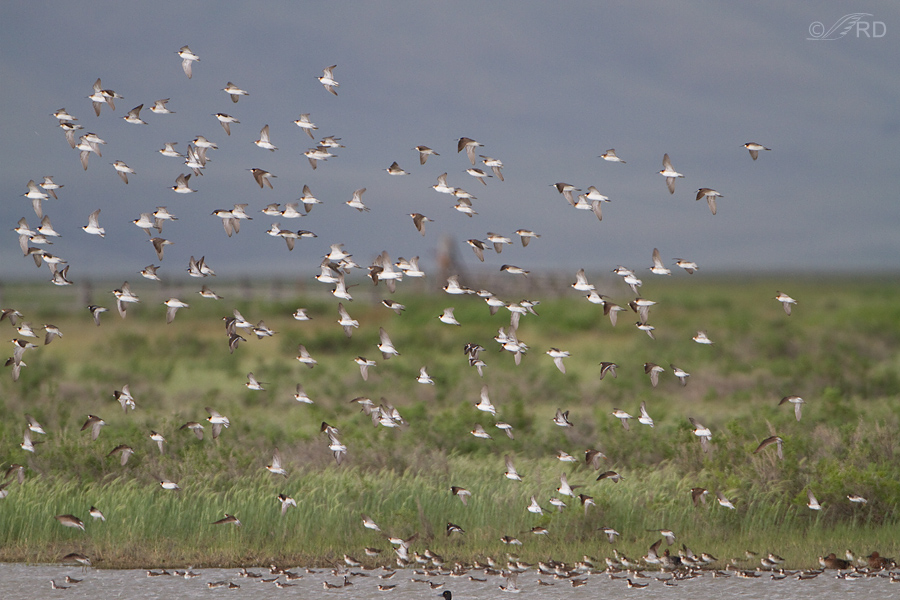

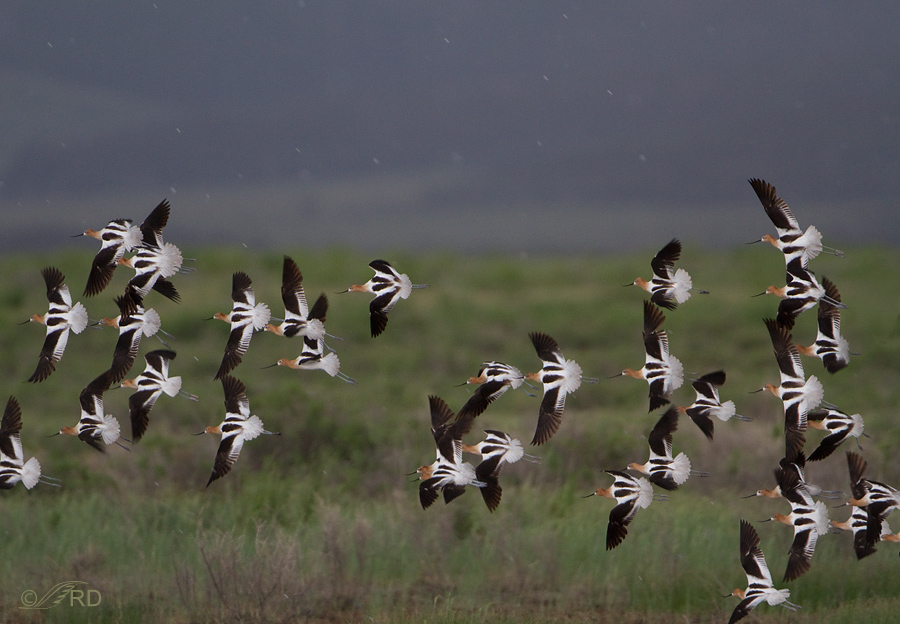
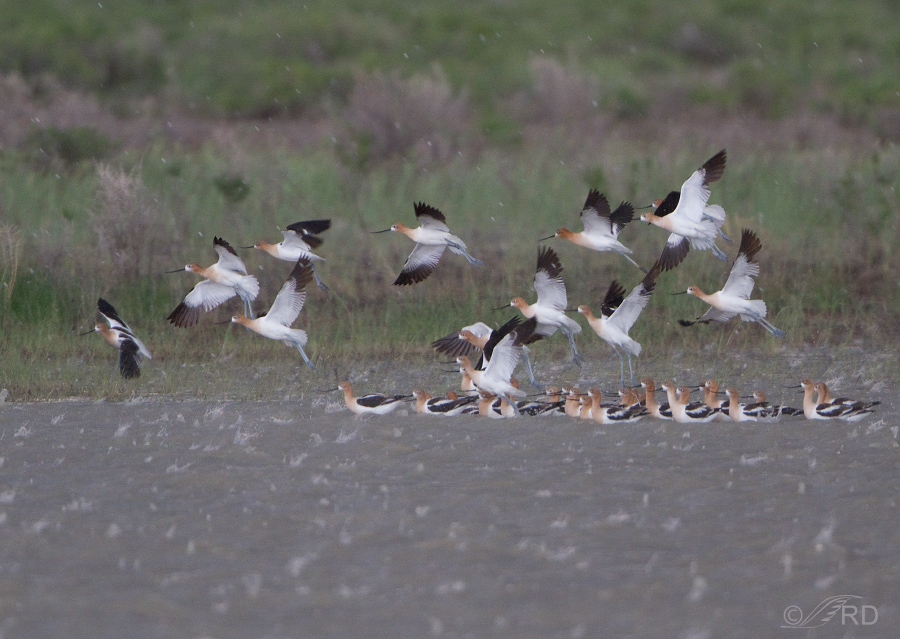
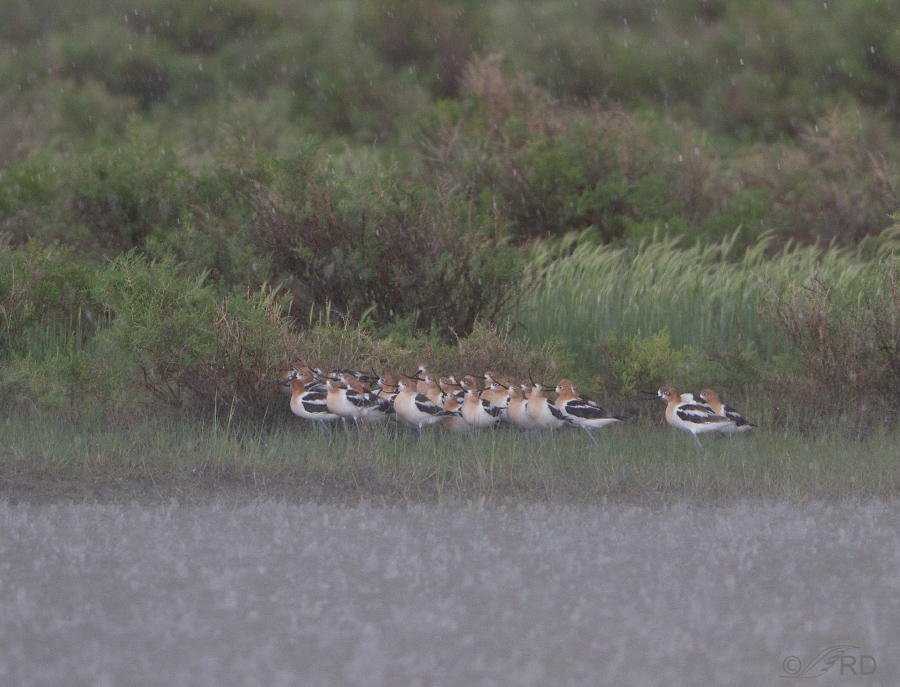

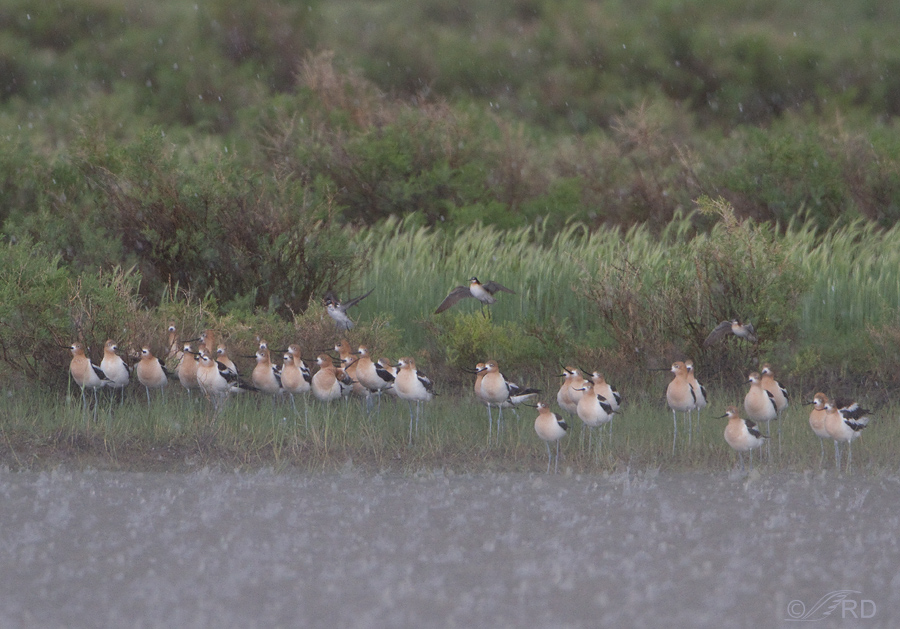
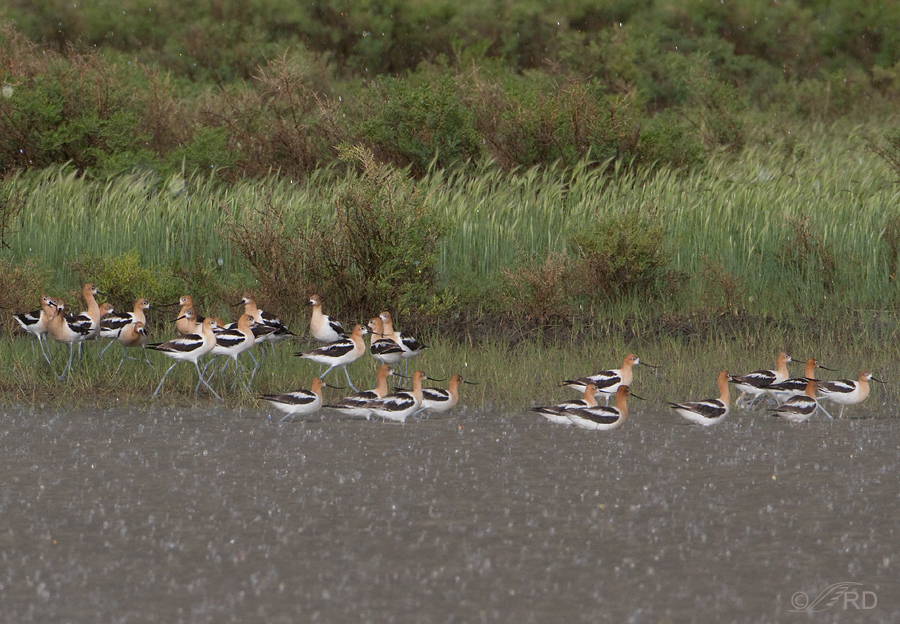
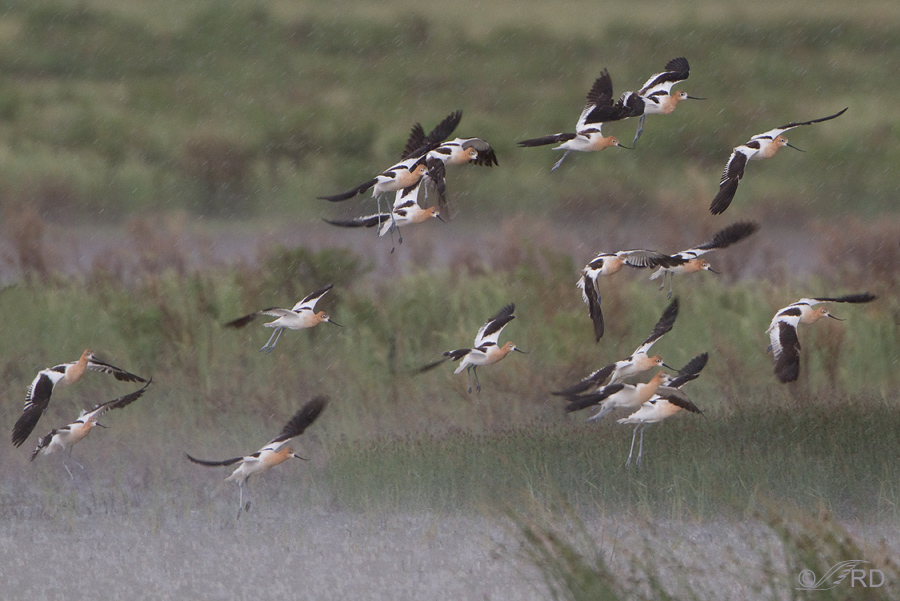

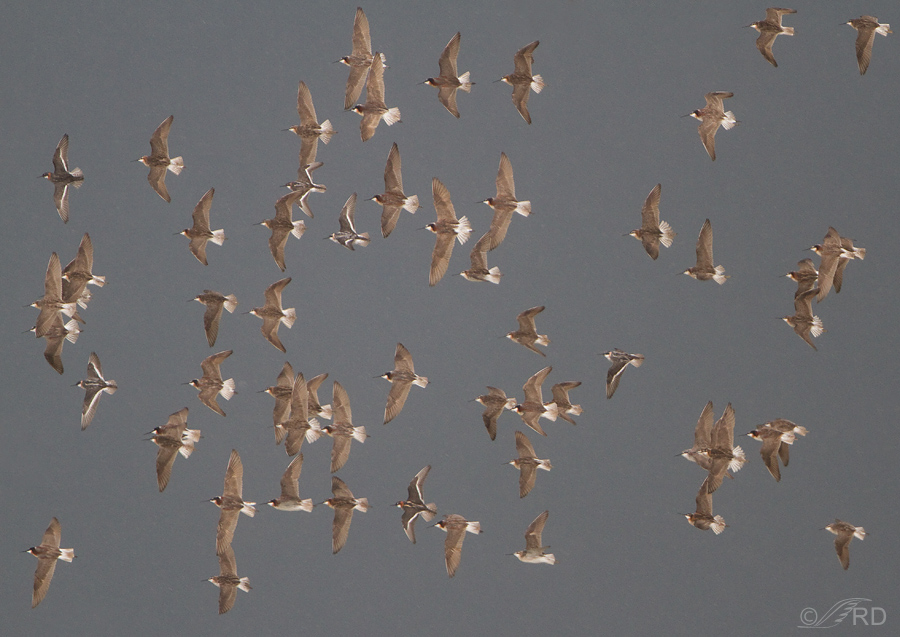
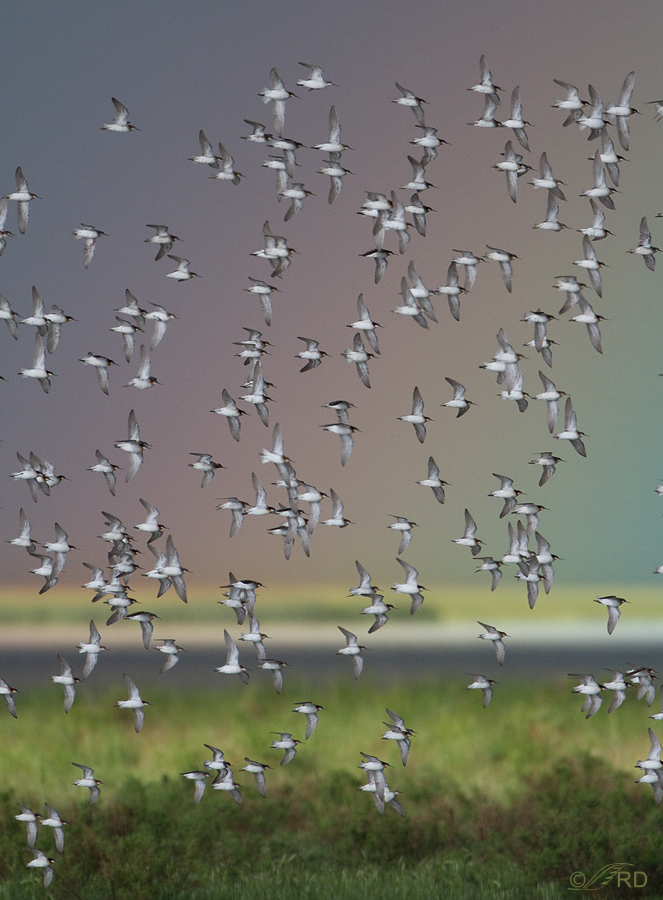
Very interesting series Ron. Always amazes me how wildlife can put up with the changes in weather or dealing with 100+ degree summer heat for months on end. That last image with the rainbow background is a real visual treat, excellent shot.
A really nice series, I like the way the rain adds an artistic touch to the images.